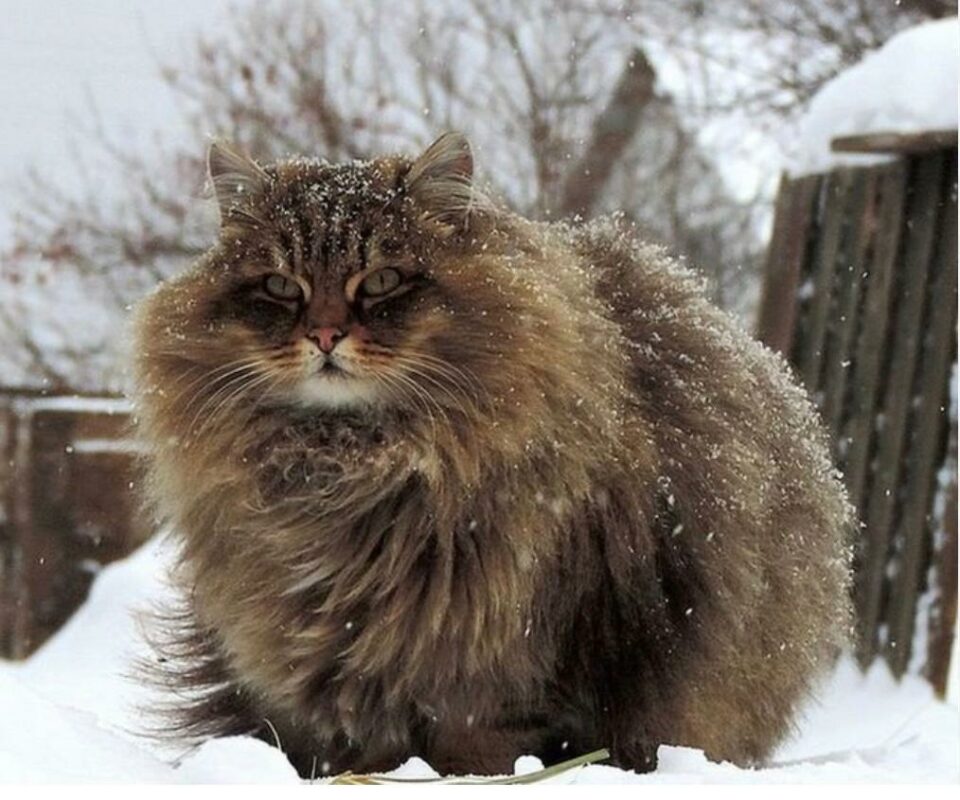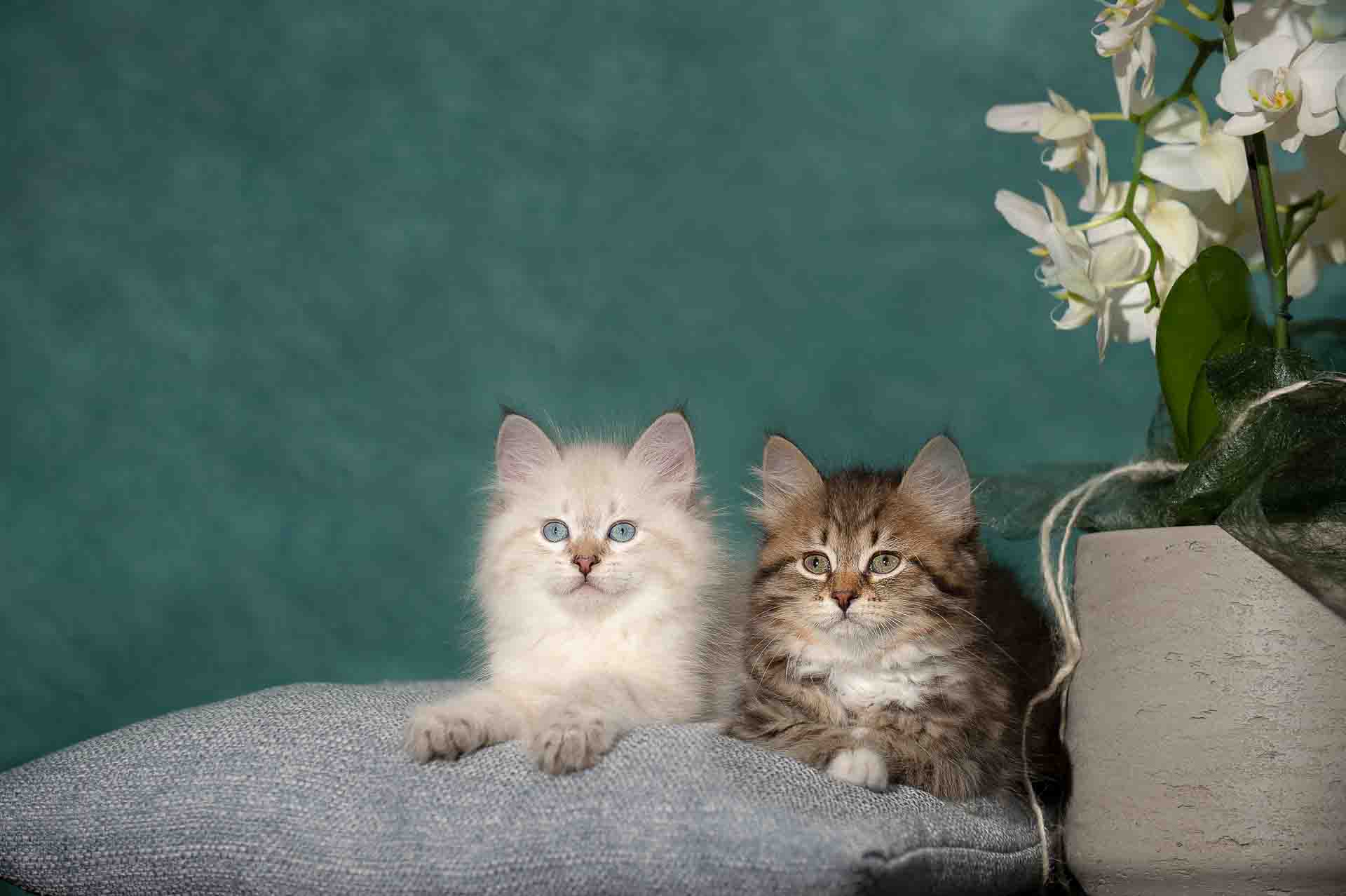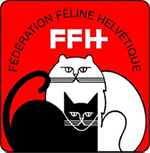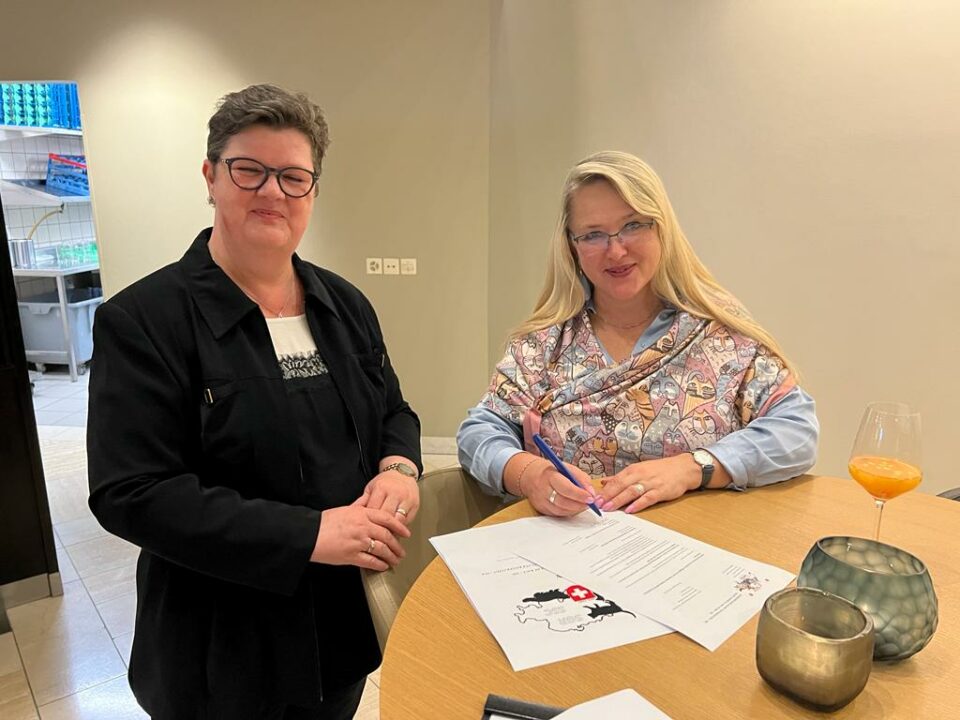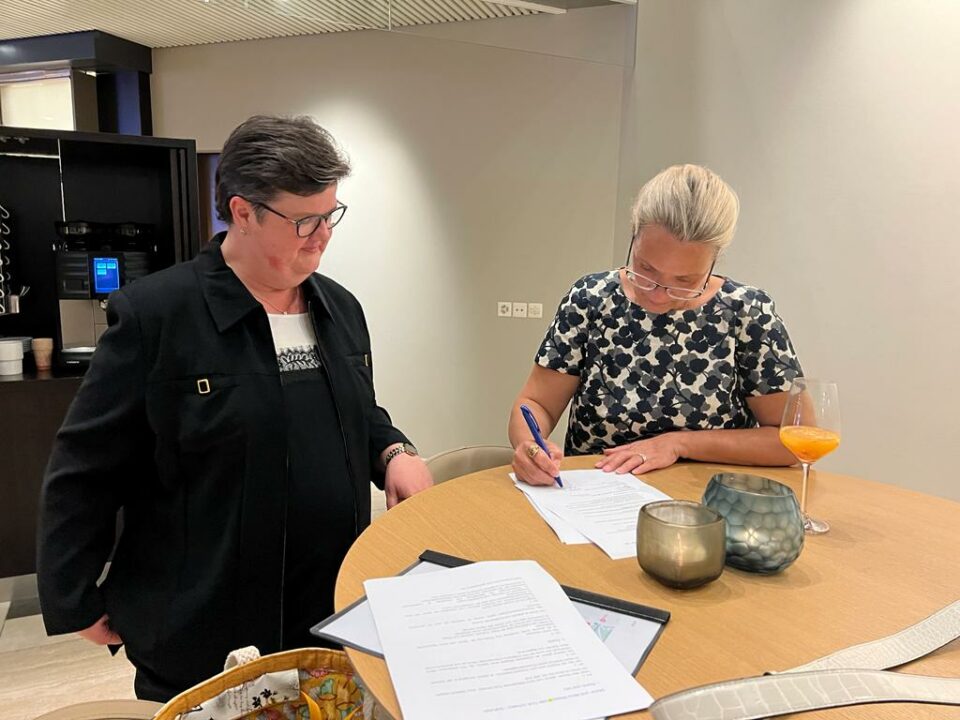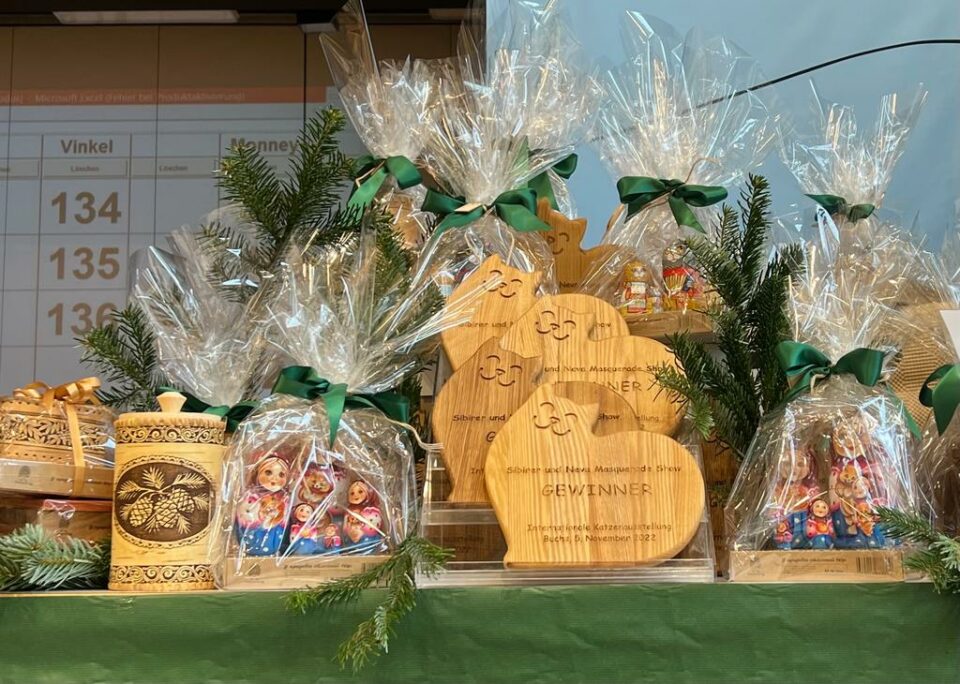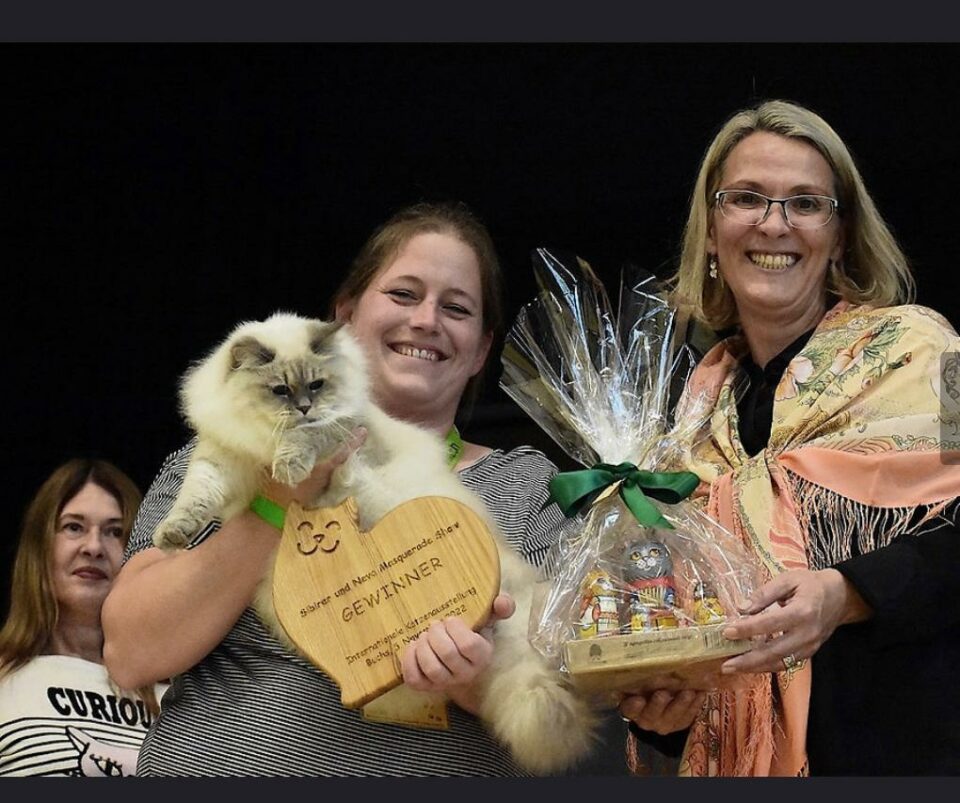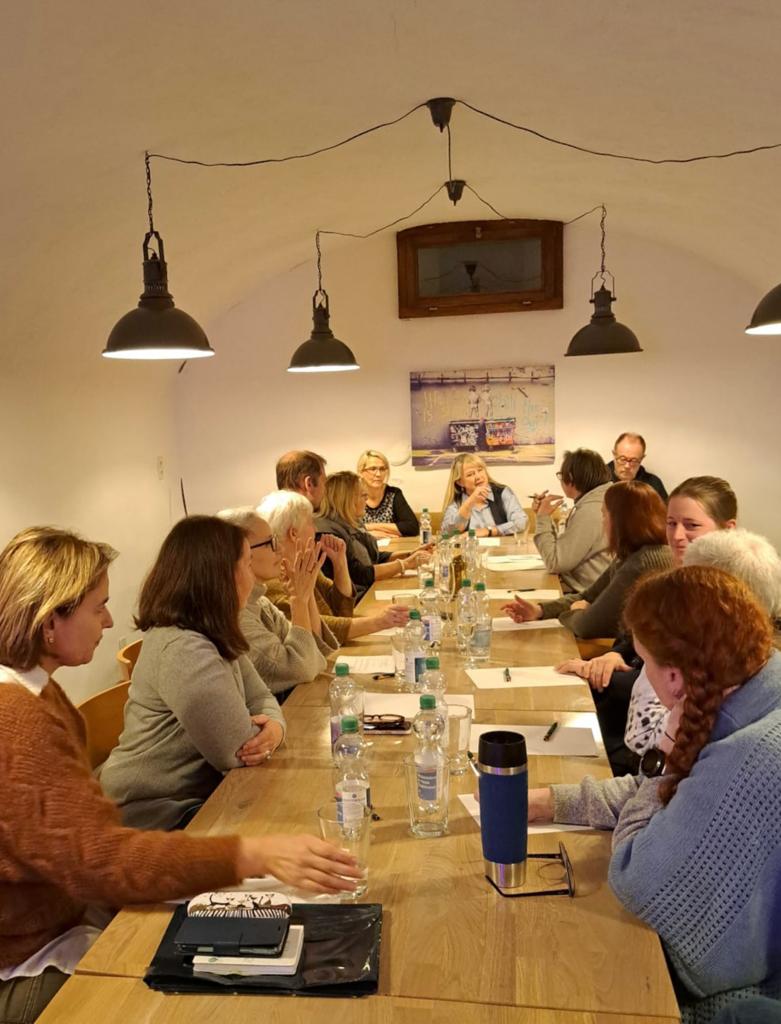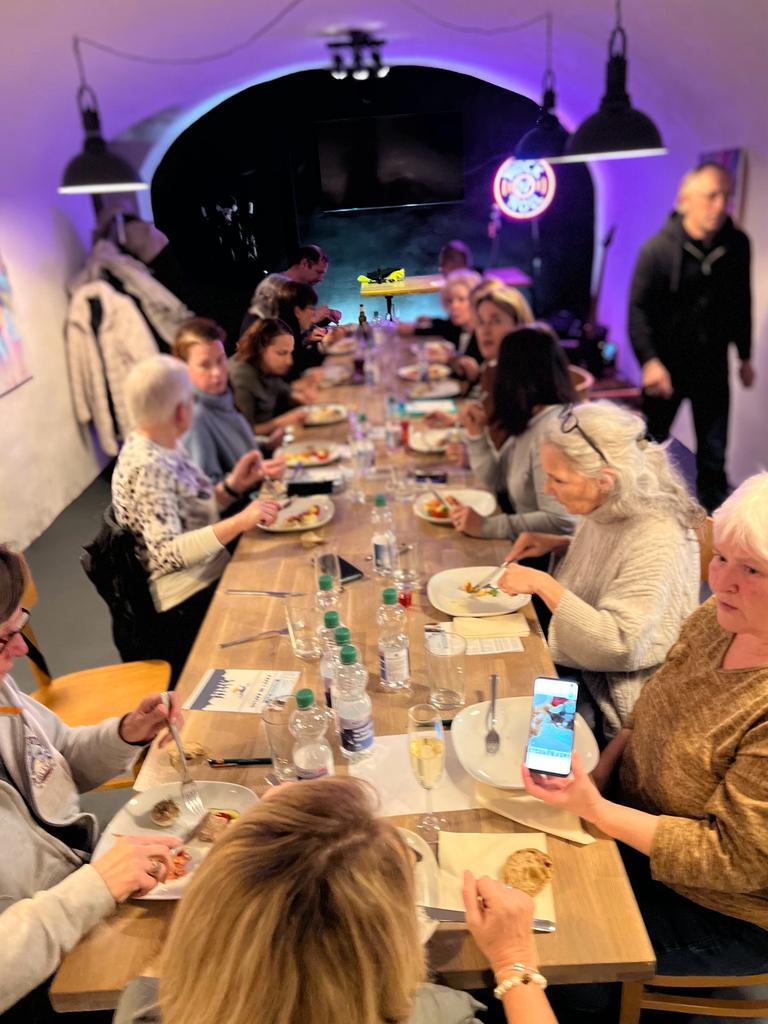The idea to start a Monobreed Club for Siberian and Neva Masquerade cats came up already in 2019, when more and more breeders of these breeds in Switzerland as well as owners of these beautiful cat breeds appeared at shows. These cats enjoyed increasing popularity and deservedly occupied one of the first places among the most popular natural breed cats in Switzerland. It was necessary to unite the breeders to support the further development of the breed, to maintain the type and to improve the quality of these breeds.
In November 2022, SNMCS successfully organised and held the first special show of Siberian and Neva Masquerade cats at the RKVO show in Frauenfeld, where more than 30 cats of these breeds participated.
The first General Assembly of the SNMCS took place on 24 January 2023 with the participation of FFH President Alfred Wittich and the legendary Swiss Siberian breeder Trudy Anliker. At the meeting, the composition of the club’s board was approved and the club’s development programme for the current year was set.
The Siberian-style dinner was a worthy conclusion to the club’s first general meeting and took place in a very friendly and cordial atmosphere.
Currently, our club is actively working to support not only breeders, but also owners of Siberian and Neva Masquerade cats and anyone interested in these breeds. We are always open and happy to welcome new club members!
[{"id":1340,"link":"https:\/\/sibirer-neva-club.ch\/jahresgebuehr-und-kontoverbindung\/","name":"jahresgebuehr-und-kontoverbindung","thumbnail":{"url":"https:\/\/sibirer-neva-club.ch\/snmcs\/wp-content\/uploads\/2022\/12\/DSC5519-1.jpg","alt":""},"title":"Jahresgeb\u00fchr und Kontoverbindung","excerpt":"Die aktuelle Geb\u00fchrenordnung und Bankverbindung","content":"F\u00fcr 2024 gelten folgende Mitgliedsgeb\u00fchren: Einzelmitgliedschaft: CHF 70.00Paarmitgliedschaft: CHF 90.00 Die Jahresgeb\u00fchr ist jeweils bis 31. Januar zu begleichen, es erfolgt keine Rechnungsstellung. Kontoverbindung: IBAN:","author":{"name":"Erica Binzegger","link":"https:\/\/sibirer-neva-club.ch\/author\/admin\/"},"date":"Okt. 9, 2023","dateGMT":"2023-10-09 20:00:56","modifiedDate":"2024-01-03 22:08:35","modifiedDateGMT":"2024-01-03 21:08:35","commentCount":"0","commentStatus":"closed","categories":{"coma":"<a href=\"https:\/\/sibirer-neva-club.ch\/category\/administratives-de\/\" rel=\"category tag\">Administratives<\/a>, <a href=\"https:\/\/sibirer-neva-club.ch\/category\/ueber-uns\/\" rel=\"category tag\">\u00dcber uns<\/a>","space":"<a href=\"https:\/\/sibirer-neva-club.ch\/category\/administratives-de\/\" rel=\"category tag\">Administratives<\/a> <a href=\"https:\/\/sibirer-neva-club.ch\/category\/ueber-uns\/\" rel=\"category tag\">\u00dcber uns<\/a>"},"taxonomies":{"post_tag":"","pp_notify_user":"","pp_notify_role":"","pp_notify_email":"","mt-event-group":""},"readTime":{"min":0,"sec":14},"status":"publish"},{"id":486,"link":"https:\/\/sibirer-neva-club.ch\/mitglied-werden\/","name":"mitglied-werden","thumbnail":{"url":"https:\/\/sibirer-neva-club.ch\/snmcs\/wp-content\/uploads\/2022\/11\/52164793643_2a1e89dbfe_o.jpg","alt":""},"title":"Mitglied werden","excerpt":"Hier k\u00f6nnen Sie Ihren Beitritt erkl\u00e4ren","content":"","author":{"name":"Erica Binzegger","link":"https:\/\/sibirer-neva-club.ch\/author\/admin\/"},"date":"Nov. 22, 2022","dateGMT":"2022-11-22 17:48:11","modifiedDate":"2023-10-09 21:45:14","modifiedDateGMT":"2023-10-09 19:45:14","commentCount":"0","commentStatus":"closed","categories":{"coma":"<a href=\"https:\/\/sibirer-neva-club.ch\/category\/ueber-uns\/mitgliedschaft\/\" rel=\"category tag\">Mitgliedschaft<\/a>, <a href=\"https:\/\/sibirer-neva-club.ch\/category\/startseite\/\" rel=\"category tag\">Startseite<\/a>, <a href=\"https:\/\/sibirer-neva-club.ch\/category\/ueber-uns\/\" rel=\"category tag\">\u00dcber uns<\/a>, <a href=\"https:\/\/sibirer-neva-club.ch\/category\/unsere-mitglieder\/\" rel=\"category tag\">Unsere Mitglieder<\/a>","space":"<a href=\"https:\/\/sibirer-neva-club.ch\/category\/ueber-uns\/mitgliedschaft\/\" rel=\"category tag\">Mitgliedschaft<\/a> <a href=\"https:\/\/sibirer-neva-club.ch\/category\/startseite\/\" rel=\"category tag\">Startseite<\/a> <a href=\"https:\/\/sibirer-neva-club.ch\/category\/ueber-uns\/\" rel=\"category tag\">\u00dcber uns<\/a> <a href=\"https:\/\/sibirer-neva-club.ch\/category\/unsere-mitglieder\/\" rel=\"category tag\">Unsere Mitglieder<\/a>"},"taxonomies":{"post_tag":"","pp_notify_user":"","pp_notify_role":"","pp_notify_email":"","mt-event-group":""},"readTime":{"min":0,"sec":1},"status":"publish"},{"id":809,"link":"https:\/\/sibirer-neva-club.ch\/alle-mitglieder\/","name":"alle-mitglieder","thumbnail":{"url":"https:\/\/sibirer-neva-club.ch\/snmcs\/wp-content\/uploads\/2023\/10\/ueber_uns_10.jpg","alt":""},"title":"Unsere Mitglieder","excerpt":"Die Mitglieder des Clubs stellen sich vor","content":"","author":{"name":"Erica Binzegger","link":"https:\/\/sibirer-neva-club.ch\/author\/admin\/"},"date":"Sep. 18, 2023","dateGMT":"2023-09-18 15:22:11","modifiedDate":"2023-10-09 20:35:28","modifiedDateGMT":"2023-10-09 18:35:28","commentCount":"0","commentStatus":"closed","categories":{"coma":"<a href=\"https:\/\/sibirer-neva-club.ch\/category\/ueber-uns\/\" rel=\"category tag\">\u00dcber uns<\/a>","space":"<a href=\"https:\/\/sibirer-neva-club.ch\/category\/ueber-uns\/\" rel=\"category tag\">\u00dcber uns<\/a>"},"taxonomies":{"post_tag":"","pp_notify_user":"","pp_notify_role":"","pp_notify_email":"","mt-event-group":""},"readTime":{"min":0,"sec":1},"status":"publish"},{"id":375,"link":"https:\/\/sibirer-neva-club.ch\/beaver-builder-post\/","name":"beaver-builder-post","thumbnail":{"url":"https:\/\/sibirer-neva-club.ch\/snmcs\/wp-content\/uploads\/2022\/11\/IMG_2159.jpg","alt":""},"title":"Vorstand","excerpt":"Vorstellung der Vorstandsmitglieder","content":"Wir sind der harte Kern des Clubs ","author":{"name":"Erica Binzegger","link":"https:\/\/sibirer-neva-club.ch\/author\/admin\/"},"date":"Apr. 13, 2015","dateGMT":"2015-04-13 10:50:16","modifiedDate":"2023-11-02 10:26:55","modifiedDateGMT":"2023-11-02 09:26:55","commentCount":"0","commentStatus":"closed","categories":{"coma":"<a href=\"https:\/\/sibirer-neva-club.ch\/category\/ueber-uns\/\" rel=\"category tag\">\u00dcber uns<\/a>","space":"<a href=\"https:\/\/sibirer-neva-club.ch\/category\/ueber-uns\/\" rel=\"category tag\">\u00dcber uns<\/a>"},"taxonomies":{"post_tag":"<a href='https:\/\/sibirer-neva-club.ch\/tag\/no-excerpt\/' rel='post_tag'>No excerpt<\/a>","pp_notify_user":"","pp_notify_role":"","pp_notify_email":"","mt-event-group":""},"readTime":{"min":0,"sec":3},"status":"publish"},{"id":892,"link":"https:\/\/sibirer-neva-club.ch\/zuhause-gesucht\/","name":"zuhause-gesucht","thumbnail":{"url":"https:\/\/sibirer-neva-club.ch\/snmcs\/wp-content\/uploads\/2023\/09\/wurf-in-box.jpg","alt":""},"title":"Zuhause gesucht","excerpt":"Junge und erwachsene Tiere unserer Z\u00fcchter suchen ihr neues Zuhause","content":"Die Inserate werden jeweils in der Hauptsprache des Anbieters ver\u00f6ffentlicht.","author":{"name":"Erica Binzegger","link":"https:\/\/sibirer-neva-club.ch\/author\/admin\/"},"date":"Sep. 22, 2023","dateGMT":"2023-09-22 11:54:08","modifiedDate":"2023-12-10 21:39:20","modifiedDateGMT":"2023-12-10 20:39:20","commentCount":"0","commentStatus":"closed","categories":{"coma":"<a href=\"https:\/\/sibirer-neva-club.ch\/category\/startseite\/\" rel=\"category tag\">Startseite<\/a>, <a href=\"https:\/\/sibirer-neva-club.ch\/category\/ueber-uns\/\" rel=\"category tag\">\u00dcber uns<\/a>","space":"<a href=\"https:\/\/sibirer-neva-club.ch\/category\/startseite\/\" rel=\"category tag\">Startseite<\/a> <a href=\"https:\/\/sibirer-neva-club.ch\/category\/ueber-uns\/\" rel=\"category tag\">\u00dcber uns<\/a>"},"taxonomies":{"post_tag":"","pp_notify_user":"","pp_notify_role":"","pp_notify_email":"","mt-event-group":""},"readTime":{"min":0,"sec":3},"status":"publish"}]
